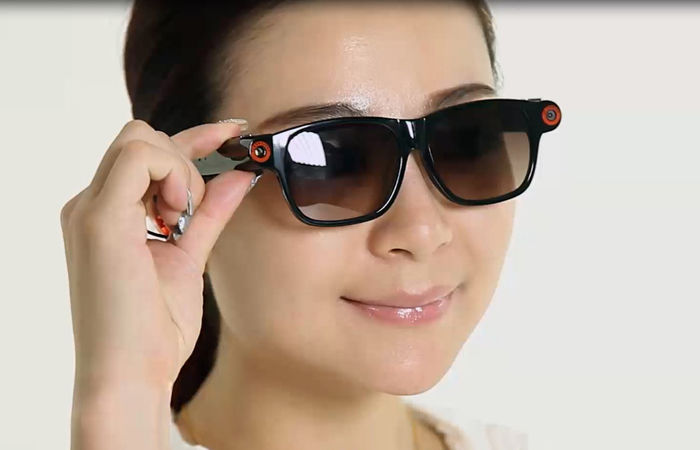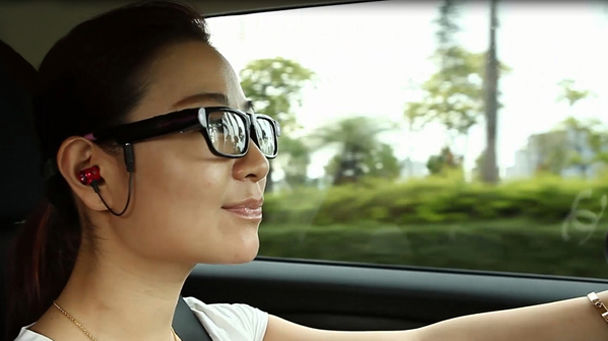Right now though, smartglasses are hard to come by. Google has stopped selling its £1,000 Explorer Edition for now, Toshiba’s smartglasses are very much a prototype and Sony’s are only designed for developers who are looking to create apps for future smartglasses. But there are some cheaper smartglasses available to buy, including the Spardar Smart Glasses, which are currently available for just £40 from GearBest (also see: Grey market tech buying advice). We were curious to find out whether these cheap smart glasses are actually any good, so we’ve spent some time with the Spardar Smart Glasses to find out. You might like our smartglasses comparison, too.
The first thing I noticed is that these smartglasses are huge. They were sliding off of the faces of everyone I tried them on, both men and women. They’re also pretty ugly (although the same can be said for most smartglasses I’ve seen so far, even the expensive ones). They have chunky black frames and are very wide due to the camera and torch built into the sides. Then, when it comes to actually using them, things become difficult. As they’re a Chinese product, it’s very tricky to understand the instructions. They’re in English, but they seem to have become a bit lost in translation. Unfortunately, you really need good instructions for these, as they’re so difficult to figure out. I should point out that these smart glasses really aren’t all that smart. There’s no heads-up display like there is in Google Glass – instead the lenses simply act as sunglasses. But on the arms of the glasses you’ll find several buttons and ports that set them apart from ordinary glasses. Let’s start with what works well. It’s easy to pair the smartglasses with your smartphone via Bluetooth. Plugging in the dedicated earpiece and popping it into your ear once you’ve paired with your phone means that you’ll be able to take calls from the glasses, and that side of things actually works pretty well. You can also listen to music directly through the glasses by streaming it from your phone, and if you’re using your phone as a satnav while driving you’ll be able to hear the directions.
But all of those things are achievable using a Bluetooth headset, which will probably be more comfortable and you’ll actually be able to use that in the dark (because the Spardars are sunglasses all the time, but don’t worry, there’s a light for emergencies). Additionally, ththere’s a camera that’s capable of capturing still photos and videos, if you can figure out how to use it. We managed to capture some photos and a few videos, but they quite regularly didn’t record and it’s difficult to know whether they were successful until you’ve plugged into your smartphone, by which time it’s probably too late. The quality of those photos and videos isn’t great at all, and we had trouble getting them off the glasses. You’ll need to use the OTG adapter to get the photos onto your smartphone, which is supported only by Android devices. I found it very temperamental when trying to get photos from the glasses on to a Samsung Galaxy S6, and had no luck at all with video, which was available only as audio recordings (and the quality of that audio was bad). All that and I haven’t even mentioned the driver safety part yet, which I couldn’t figure out how to turn off to begin with so was told on repeat “Don’t drink and drive.” After some instructions decoding, I realised that ‘Doze’ mode was activated (I promptly turned it off), which is designed to wake you up if your head dips while you’re driving. It’s a good idea, but it seemed to be happening even when I wasn’t dipping my head, so I imagine that it could be super-annoying and more distracting than helpful in reality. Ashleigh is Tech Advisor’s Head of Affiliate. Providing expert buying advice you can trust is her forte, helping you to find the most reputable consumer tech products and services, and ensuring you don’t spend a penny more than you should.

